Remember when school lunch was an adventure in mystery meat and fluorescent colors? The 1970s cafeteria was a world unto itself, where nutritional guidelines were more like suggestions and flavor came in powdered packets. These iconic lunch items may have been questionable by today’s health standards, but they’re permanently etched into our collective memory as the taste of childhood.
1. Rectangle Pizza That Defied All Pizza Logic
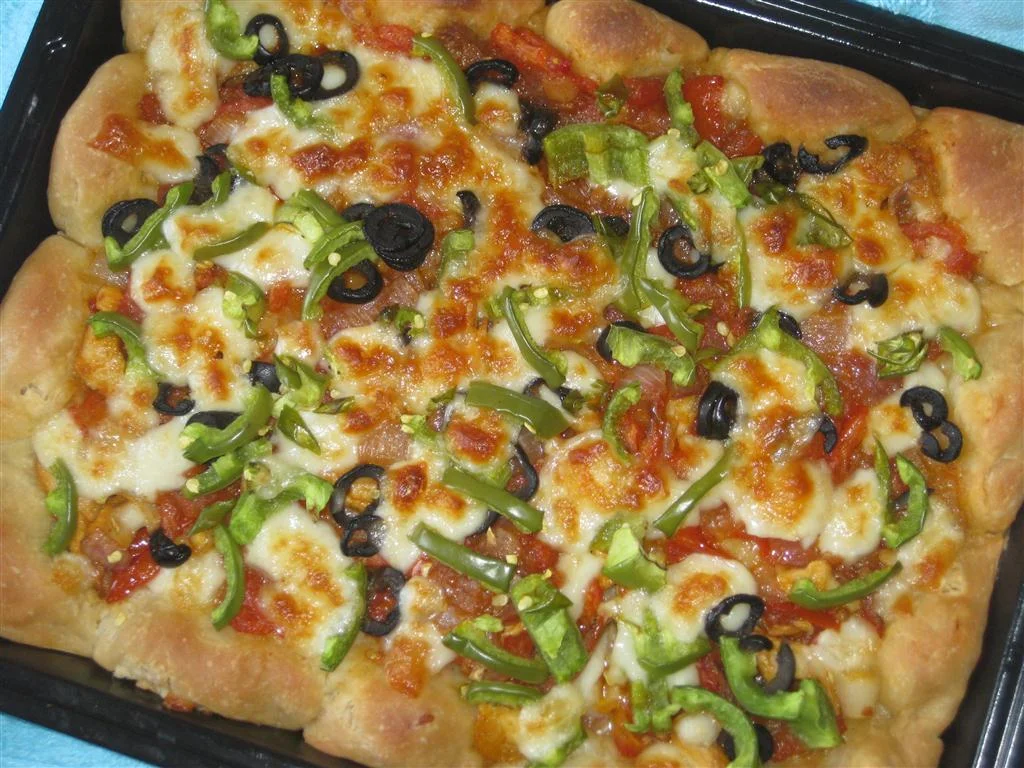
That rectangular “pizza” served on brown paper trays was unlike anything you’d find in the real world, but somehow it became the gold standard for school lunch excitement. The sauce was unnaturally red and sweet, applied so thinly you could see the dough underneath, while the cheese formed a rubbery layer that peeled off in one satisfying sheet. The crust had a texture somewhere between cardboard and Wonder Bread, yet pizza day was still the most anticipated meal of the week. Buddy’s Pizza recounts the delectable history of this unusual but tasty cafeteria staple.
The geometric perfection of those rectangles was both fascinating and disturbing—each piece exactly the same size, cut with industrial precision that real pizzerias couldn’t match. Kids would carefully separate the cheese from the crust, eating each component individually like a deconstructed meal. The fact that it bore only a passing resemblance to actual pizza didn’t matter; it was our pizza, and we defended it fiercely against anyone who dared call it fake.
2. Sloppy Joes That Were More Sloppy Than Joe
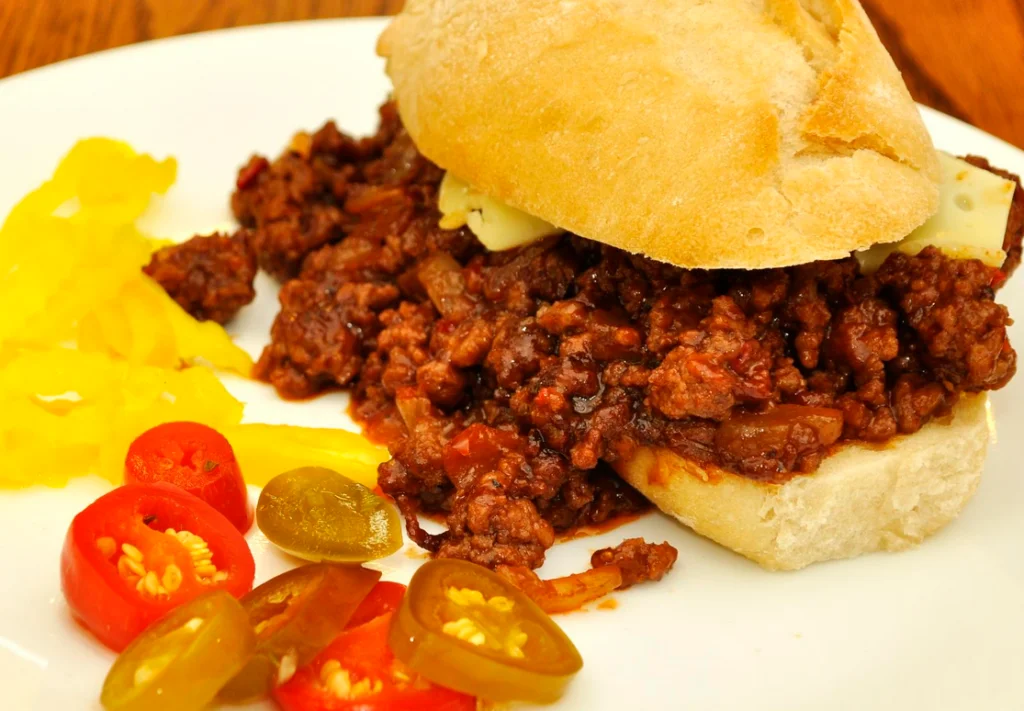
The cafeteria version of Sloppy Joes consisted of ground meat swimming in a sauce that was equal parts ketchup, brown sugar, and mystery seasonings, served on hamburger buns that disintegrated on contact. The meat mixture had the consistency of chunky soup and the color of rust, creating a meal that was virtually impossible to eat without making a complete mess. The orange-red sauce would inevitably leak through the bottom bun, leaving your hands sticky and your napkin supply dangerously depleted. Blue Apron considers this sandwich the epitome of comfort food.
Despite the logistical nightmare of actually eating them, Sloppy Joes represented comfort food at its most basic level—warm, filling, and somehow satisfying. The cafeteria ladies would ladle the mixture onto buns with the confidence of short-order cooks, even though everyone knew the structural integrity of the sandwich was doomed from the start. The communal experience of trying to eat these things without destroying your clothes created a shared bond among students that transcended social hierarchies.
3. Tater Tots That Were Basically Potato Nuggets
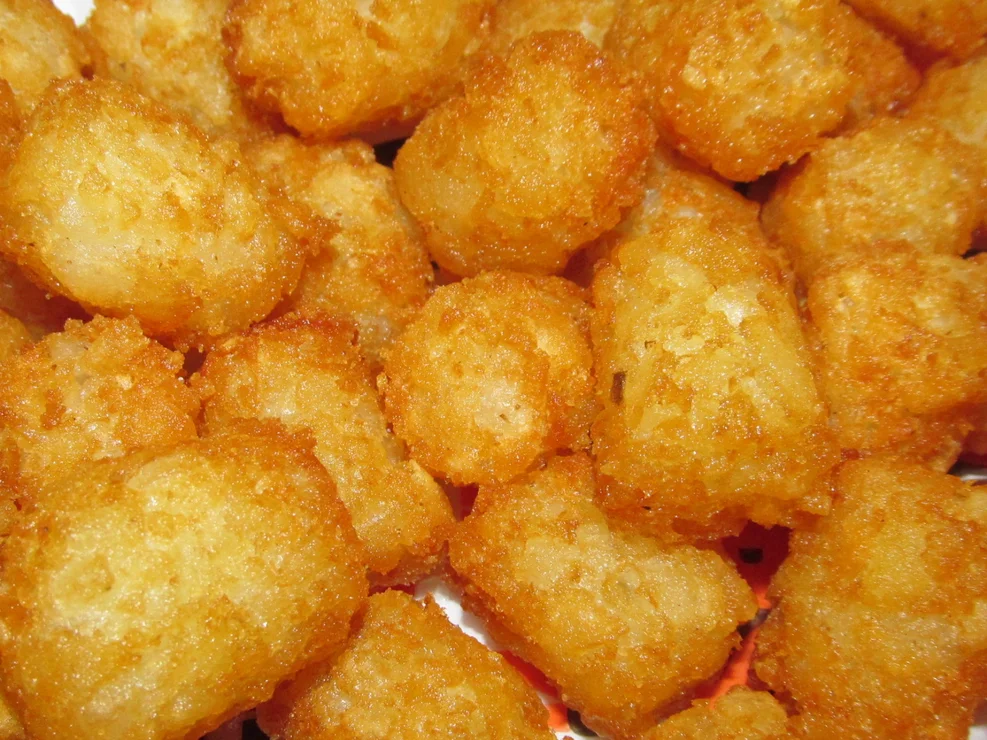
Those golden cylinders of processed potato perfection were the closest thing the ’70s cafeteria had to gourmet food, crispy on the outside and fluffy on the inside. Tater Tots were industrial food engineering at its finest—taking leftover potato scraps and transforming them into something that kids actually wanted to eat. The cafeteria version came in massive quantities, served with an ice cream scoop that made portion control feel generous rather than restrictive. Eater has high praise for this favorite meal and the creativity it presents.
The beauty of Tater Tots lay in their consistency—every single one was exactly the same size, shape, and golden-brown color, like little potato soldiers marching across your tray. They were the perfect vehicle for ketchup, which was dispensed from industrial-sized containers that never seemed to run empty. These cylindrical wonders proved that sometimes the most processed foods could also be the most beloved, creating a standard that frozen food aisles still try to match today.
4. Chicken Nuggets Before McNuggets Made Them Famous
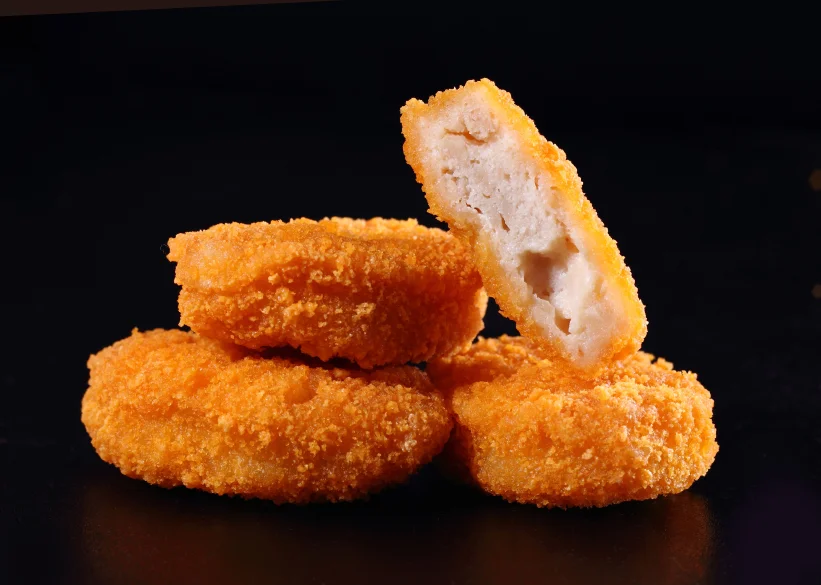
School cafeteria chicken nuggets were irregular chunks of processed poultry covered in a coating that was more bread crumb than chicken, served years before McDonald’s made nuggets a mainstream phenomenon. The shapes were wonderfully random—some round, some oval, some vaguely resembling actual chicken parts—giving each meal a treasure hunt quality as you searched for the biggest piece. The coating had a distinctive orange tint that suggested heavy seasoning, though the flavor was more “generic fried” than specifically chicken.
These proto-nuggets were often served with packets of honey or barbecue sauce that came in tiny plastic containers impossible to open without scissors. The chicken inside was uniformly white and had the texture of firm tofu, leading to endless speculation about what parts of the chicken were actually involved. Despite their questionable origins, they were infinitely preferable to the mysterious “chicken patties” that occasionally appeared on the menu, making nugget day feel like a victory for student taste buds.
5. Chocolate Milk in Those Iconic Glass Bottles
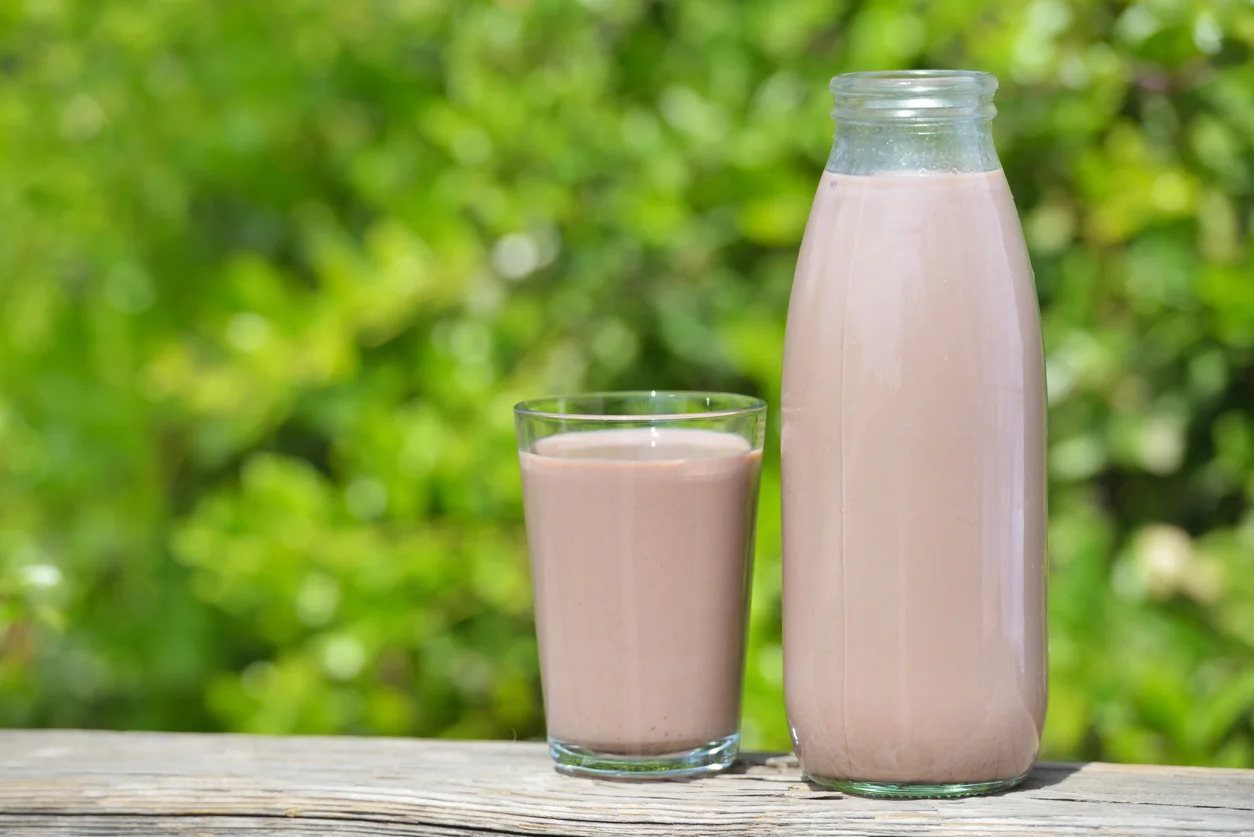
The small glass bottles of chocolate milk were perhaps the most universally beloved item in the entire cafeteria arsenal, with their distinctive shape and that satisfying “pop” when you opened them. The milk itself was impossibly rich and sweet, with a chocolate flavor that seemed enhanced by the glass container in a way that cartons could never match. The bottles were perfectly sized for small hands, and the ritual of shaking them before drinking was as important as the milk itself.
Those little bottles represented a connection to an earlier era when milk was delivered door-to-door and glass containers were the norm rather than the exception. The dairy company logos stamped on each bottle gave them an official, almost medicinal quality that made drinking milk feel important and healthy. When schools eventually switched to cartons and plastic containers, something essential was lost—the weight of the glass, the coldness against your palm, and the ceremonial aspect of breakfast that made even the most reluctant milk drinkers feel special.
6. Fish Sticks That Looked Nothing Like Fish
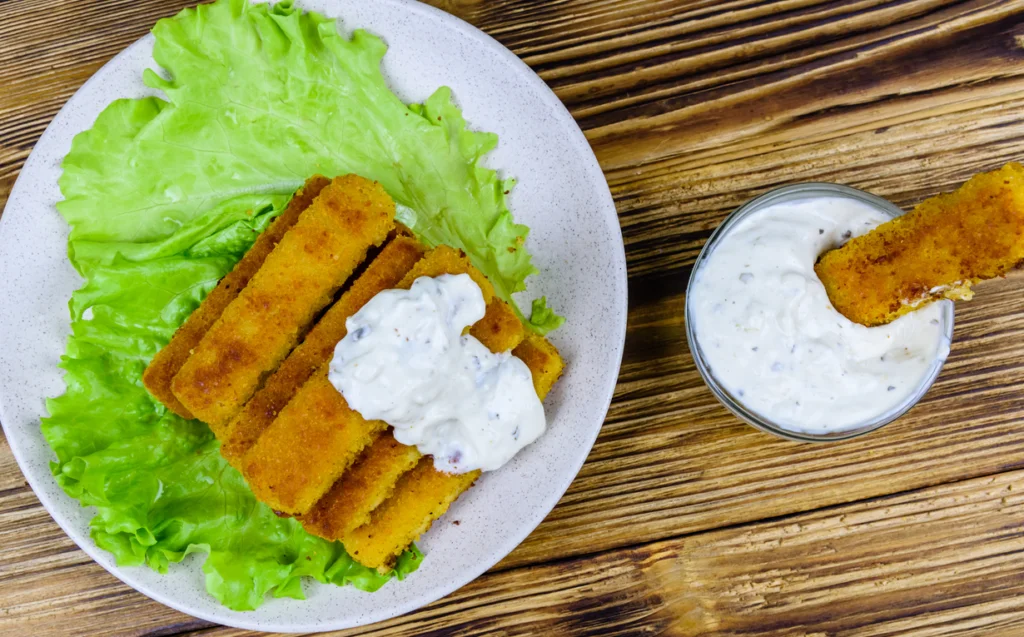
Those rectangular breaded objects served as “fish” were coated in so much breading that finding actual fish inside was like an archaeological expedition. The coating was uniformly golden and had a texture that suggested it had been applied with industrial equipment rather than human hands. The fish inside was white, flaky, and completely without any identifiable fish flavor, leading to persistent rumors about what kind of sea creature had actually been processed into submission.
Fish stick day was usually accompanied by tartar sauce packets and french fries, creating a meal that was theoretically seafood but felt more like a fried food sampler platter. The geometric perfection of each stick was both impressive and slightly unsettling—nature doesn’t make fish in perfect rectangles, after all. Yet they were oddly satisfying to eat, especially when dunked in ketchup instead of the more sophisticated tartar sauce that most kids ignored entirely.
7. Corn Dogs That Were More Corn Than Dog

The cafeteria corn dog was a marvel of food engineering—a hot dog completely encased in a thick cornmeal batter that was deep-fried to golden perfection and served on a wooden stick. The ratio of corn coating to actual hot dog was heavily weighted toward the corn, creating a meal that was essentially fried cornbread with a mystery meat center. The coating had a sweet, slightly gritty texture that was surprisingly filling, even if the hot dog inside was somewhat underwhelming.
These corn dogs came pre-wrapped in paper that never quite covered the whole thing, leading to inevitable fingers sticky with corn batter and mustard. The wooden sticks were reused for art projects and playground games, giving corn dog day a utility that extended far beyond lunch. The combination of sweet cornmeal coating and salty processed meat created a flavor profile that was uniquely American and uniquely institutional, something you couldn’t replicate at home no matter how hard you tried.
8. Hamburgers That Challenged the Definition of Meat
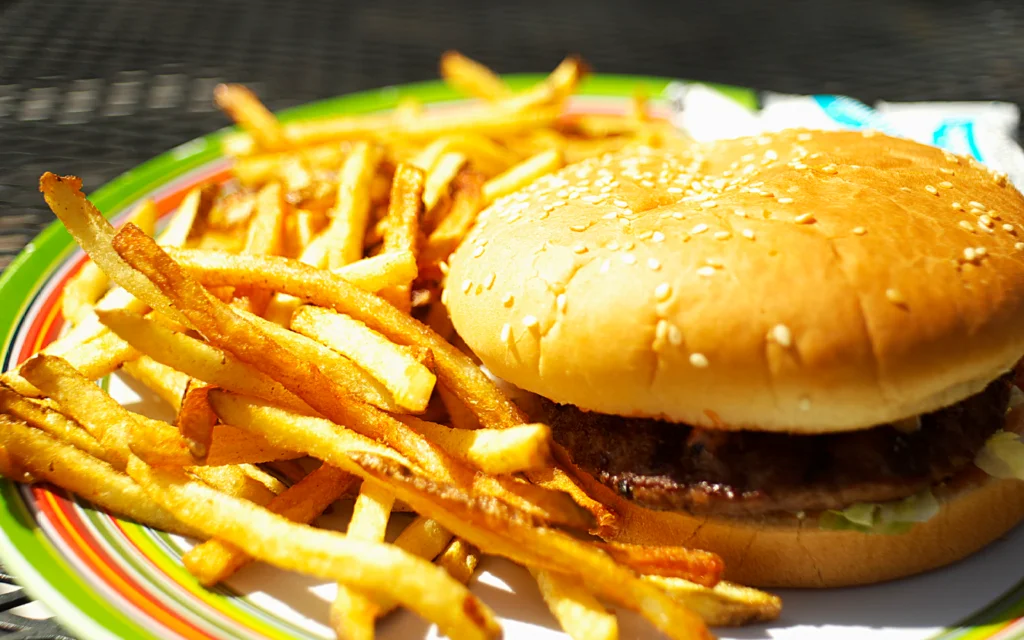
The cafeteria hamburger was a thin, gray patty that bore only a passing resemblance to ground beef, served on a bun that was somehow both soggy and dry at the same time. The meat had been processed and seasoned into submission, creating a uniform texture that suggested it had once been multiple different cuts of beef before being reformed into patty shape. The color was distinctly un-appetizing, falling somewhere between beige and gray, yet somehow it still qualified as a hamburger in the cafeteria universe.
These burgers were typically served with a slice of processed cheese that never quite melted properly and pickle chips that provided the only real flavor in the entire sandwich. The buns were mass-produced and had the texture of slightly stale Wonder Bread, creating a foundation that was more functional than flavorful. Despite their obvious shortcomings, hamburger day was still preferable to many other cafeteria offerings, proving that even questionable meat products could feel like comfort food when served with enough ketchup and optimism.
9. Mashed Potatoes That Came from a Box
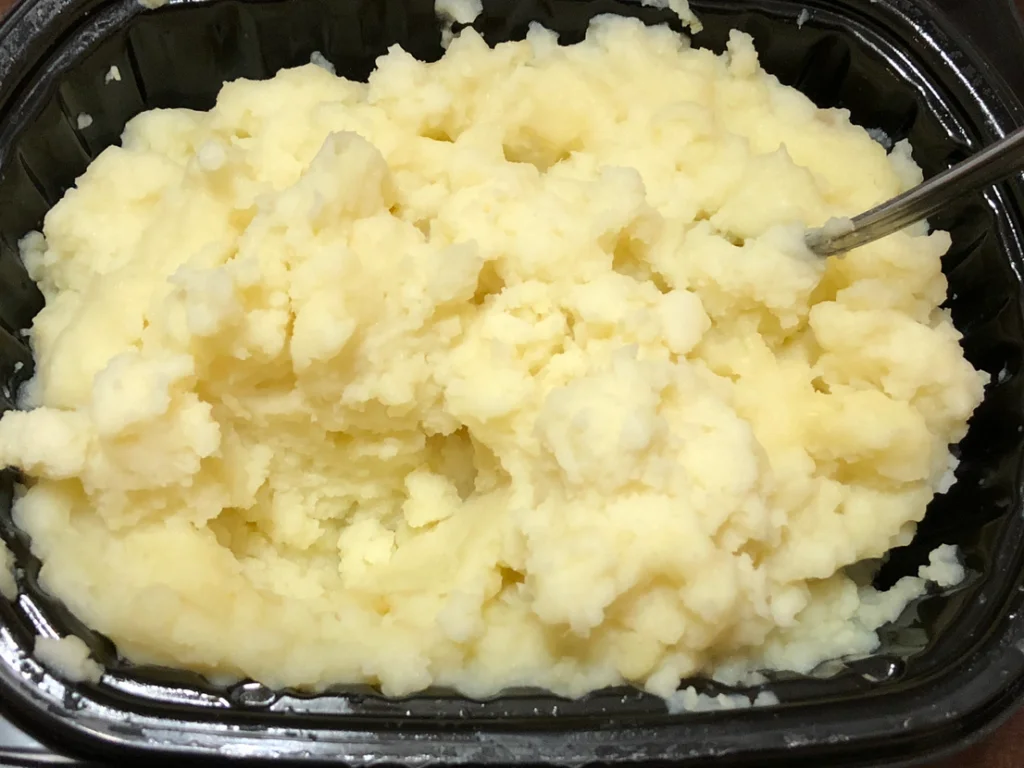
Those perfectly smooth, unnaturally white mashed potatoes were clearly reconstituted from powder, with a consistency that was simultaneously fluffy and gluey. The texture was so uniform it was almost unsettling—no lumps, no variations in color, just pure potato-flavored starch that had been whipped into submission. They were served with an ice cream scoop that created perfect dome shapes on each tray, making portion control look like food artistry.
The flavor was aggressively bland, designed to offend no one while exciting no one, served alongside whatever protein was on the menu that day. These potatoes were the ultimate comfort food for kids who found actual home-cooked mashed potatoes too chunky or flavorful. The fact that they came from a box was both obvious and irrelevant—in the cafeteria universe, convenience and consistency trumped authenticity every single time.
10. Green Beans That Were More Gray Than Green
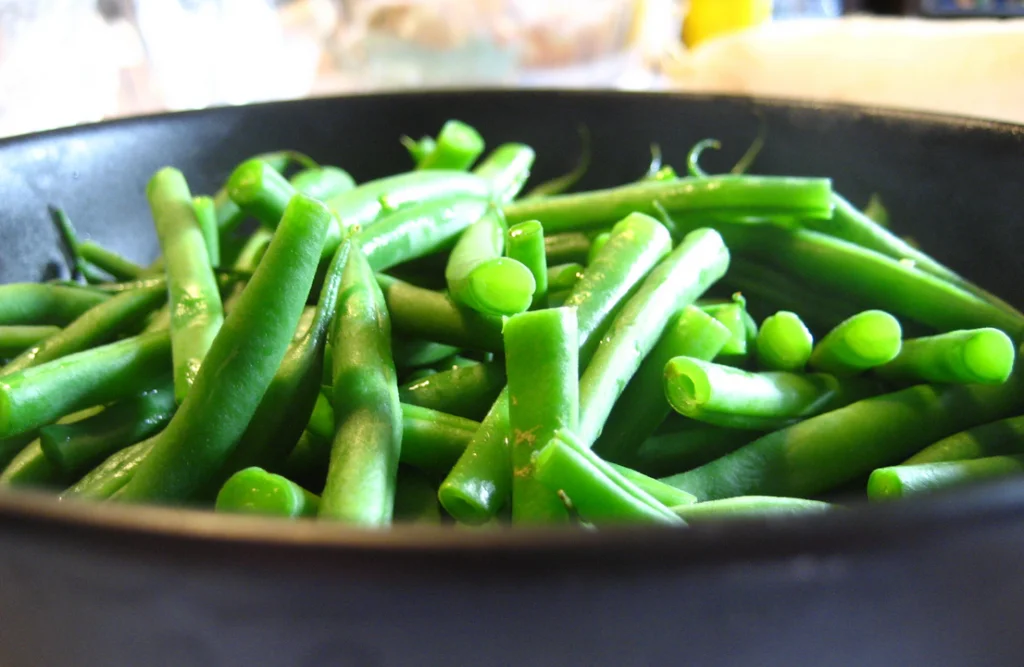
Those limp, overcooked green beans had been boiled into submission until they achieved a color somewhere between olive drab and institutional beige. They were served warm but not hot, with a texture that suggested they had given up any pretense of being actual vegetables long before reaching your tray. The flavor was predominantly salt and steam, with only the faintest hint that these had once been fresh green beans growing in someone’s garden.
Despite their obvious nutritional value, green beans were universally the most traded item on cafeteria trays, passed around like unwanted currency until they found their way to the one kid who actually ate vegetables. The cafeteria ladies served them with the same professional dignity they brought to pizza day, treating these gray-green casualties as if they were a legitimate side dish. Their presence on every tray served as a daily reminder that someone, somewhere, was trying to make sure we got our vegetables, even if the execution left something to be desired.
11. Chocolate Cake That Was Actually Chocolate

The cafeteria chocolate cake was one of the few menu items that lived up to its name—dense, moist, and genuinely chocolatey in a way that made you forget about everything else on your tray. The frosting was thick and fudgy, applied with the kind of institutional generosity that suggested the cafeteria ladies understood the importance of dessert in a child’s day. Each slice was cut into perfect rectangles with mathematical precision, but the taste was pure indulgence.
This cake was so good that it spawned countless attempts to recreate it at home, though no one ever quite managed to capture the particular combination of chocolate intensity and cafeteria magic. The recipe was a closely guarded secret, passed down through generations of lunch ladies who understood that sometimes institutional food could transcend its humble origins. Chocolate cake day was the one time when cafeteria food actually competed with home cooking and won, creating memories that lasted long after the last crumb was eaten.
12. Fruit Cocktail That Defined Canned Fruit Forever

That syrupy mixture of diced peaches, pears, grapes, and the occasional maraschino cherry represented most kids’ first introduction to “fruit salad,” served in small bowls that made it feel more like dessert than nutrition. The fruit pieces were uniformly soft and sweet, swimming in a clear syrup that was probably more sugar than fruit juice. The maraschino cherries were the crown jewels of each serving, artificially red and impossibly sweet, making the whole bowl worth eating just to reach them.
The fruit cocktail was served at room temperature, which somehow made it more appealing than if it had been properly chilled, creating a comfort food quality that fresh fruit could never match. Each can contained exactly the same ratio of fruit pieces, ensuring that every child got the same number of cherries and the same disappointment when they ran out. This standardized approach to fruit service created a shared experience that transcended individual preferences, making even the most sugar-averse kids appreciate the simple pleasure of canned fruit in heavy syrup.
Those were the days when school lunch was about surviving the experience rather than savoring it, yet somehow these questionable culinary creations became the comfort food of our childhood. The institutional approach to cooking may have stripped away subtlety and sophistication, but it created a shared language of flavors that an entire generation still recognizes. While modern school cafeterias focus on nutrition and fresh ingredients, there’s something to be said for the unpretentious honesty of food that never claimed to be anything other than what it was—cheap, filling, and surprisingly memorable.



